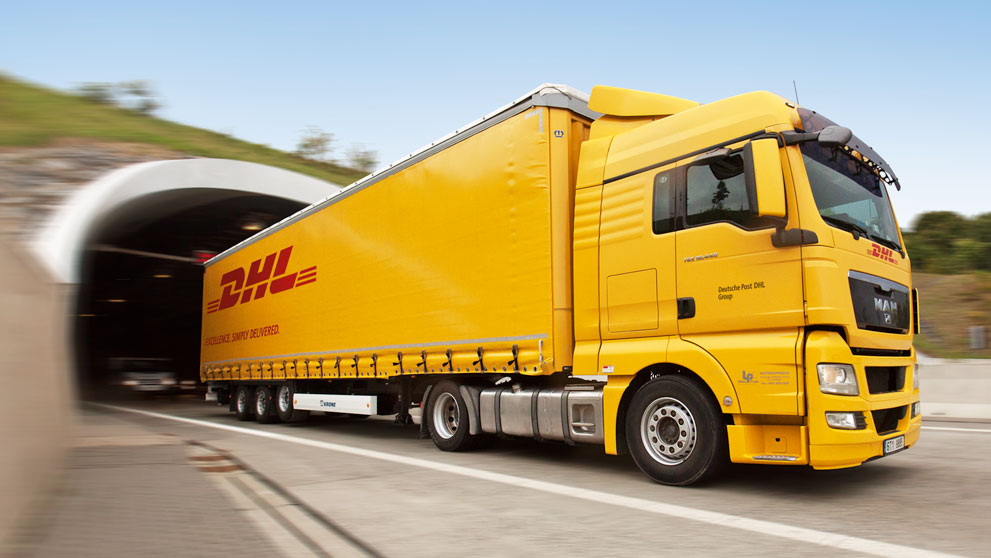Home to a huge, internet-savvy population of online shopping fans, it's no surprise that the US is a top target for ambitious APAC-based businesses. This global e-commerce superpower promises lucative opportunities for overseas sellers - if they understand how consumers there like to shop online, and how to navigate the country's complex tax rules. Read on to ensure its smooth sailing for your business.
Over 330 million people live in the US1. Perhaps unsurprisingly for the birthplace of e-commerce giant Amazon, people there love to shop online.
Driven by a high internet penetration rate, the country’s e-commerce revenue was worth US$768 billion in 2021 – 13% of its total retail sales2.
There’s even better news for overseas businesses. American consumers enjoy discovering and buying products from cross-border brands; over half have reported making online purchases from foreign sites in the past3. And their number one shopping destination? China4.
Yet, there are some challenges for APAC-based businesses wishing to sell to the US, namely strong competition from established domestic brands, and complex tax regulations to navigate.
Read on to discover key considerations and advice for international e-commerce sellers wishing to tap into this lucrative market.
Leading product categories for cross-border online shoppers in the US, 2021
- Clothing/apparel: 28%
- Toys/hobbies: 15%
- Entertainment/education (physical items): 12%
Source: Statista5
Why American shoppers buy from cross-border brands
Understanding why Americans shop from overseas markets is the key to help you position your marketing and sales strategy.
Leading reasons US online shoppers buy from abroad6:
Cheaper prices
Earlier this year, consumer price inflation in the US hit a 40-year high7. As the cost of living rises, Americans are looking for bargains and discounts online. Consider your pricing carefully, and research your competitors’ price points – if you can offer your products cheaper, you’ll win the sale.
Selling in bulk is a tactic that works well in the US, as people feel they’re getting value for money. And, with manufacturing prices cheaper in APAC regions than the US, you may also have interest from American wholesalers looking to bulk buy your products to sell on. Be prepared to negotiate deals.
To buy unique or specialty products
The e-commerce market in the US is fiercely competitive, but if you’re selling something which consumers there can’t source from domestic sellers, that’s your entry point – you just need to be sure they know you exist! In America, Amazon is now rivalling Google for search – in fact, 44% of American consumers start their purchasing journey on Amazon8 – so having a presence on the platform is a good way to ensure your brand is discovered by the widest audience possible. Which leads us nicely on to our next point…
Amazon is King
Amazon.com’s dominance of the US e-commerce sector is unrivalled – a whopping 90% of US online shoppers have bought something from the site9.
Fortunately for those based in APAC, the site’s Fulfilment by Amazon (FBA) program does allow overseas businesses to register and sell on the platform, including those from China, India, Australia, Indonesia, the Philippines and Thailand. (You can find a full list of permitted countries here.) Once registered, sellers can send and store their inventory in Amazon’s warehouses, where Amazon employees will pick, pack and ship the goods on their behalf. Of course, this service comes with fees, but for international businesses looking to tap into the US market and get to know customers there, it’s a good place to start.
Scale of the country
The size of the population can put big demand on overseas sellers used to trading with smaller markets. In its US country economic report, JP Morgan advised that “merchants [selling to the US] need to ensure they are able to fulfil up to 10 times their current order volume to prevent disappointing new customers.”10
Though it’s a single country, the US is vast, with 50 states and six different time zones. The states can vary widely in lifestyles and median household income levels. Then there’s the difference in shopping habits by age groups: millennials are the main drivers of e-commerce in the US, comprising around 20% of online shoppers (as of February 2020)11.
In short, if you’re planning on selling to the US, you should be researching and segmenting audiences there thoroughly to find the specific customer demographics most suitable for your business. As an example, if your business sells surfing equipment, putting money behind adverts targeted at those living in California is certainly going to yield greater ROI than those in the middle states. And that’s just one, broad example.
Important website features
If you’re selling to US consumers via your own e-commerce website, be sure it meets their expectations or else you risk them abandoning their carts. According to a survey by S&P Global Market Intelligence12, the most important online store features to US shoppers are:
- Search and navigation (61%). Your search bar should be displayed in a prominent position on each page. It should be powerful enough to recognize a wide range of search terms related to popular products, and then allow users to filter the displayed results. Ensure your website’s navigation is intuitive and fast, and keep clutter and pop-ups to a minimum.
- Product ratings and reviews (53%). These are particularly important for foreign brands wishing to build trust amongst US consumers. Include lots of customer reviews on your website – people tend to see reviews from their peers as more authentic than those posted by influencers.
- A fast and convenient checkout process (50%). Is your website fast loading? Do you enable guest checkout? Have you kept form filling to a minimum? Customers want to pay for their products with minimum fuss, so keep the final checkout stage short and sweet.
The smartphone factor
Mobile commerce is fast outpacing desktop as the platform of choice for US online shoppers13, so ensure your website is optimized for the small screen.
US shoppers rely heavily on social media channels for product discovery. 84% of online shoppers refer to at least one social media site for recommendations before purchasing online14, so your social media channels should play a key part of your marketing strategy when selling to the US. Here’s how to get the “super-scrollers” to notice your brand.
Payment trends
Did you know that online shoppers are 70% more likely to finalize a purchase if their preferred payment method is displayed as an option at checkout?15
In 2020, the most popular payment methods amongst US online shoppers were credit cards and digital wallets (tied at 30% of transactions), followed by debit card (21%)16. Integrating these into your online checkout will ensure you don’t lose US buyers at the last moment.
Display all prices on your website in US dollars, and allow customers to pay via that currency too.
Delivery
Amazon Prime has set the bar high for e-commerce in the US: consumers there are accustomed to getting their online orders quickly and with free shipping. In fact, “high shipping costs” and “long delivery times” are their main concerns around buying from cross-border merchants17.
By partnering with an international logistics specialist like DHL, you can guarantee your cross-border customers fast and on-time delivery, with full tracking. DHL eCommerce Solutions is a world leader in global e-commerce, helping businesses of all sizes grow within and beyond borders. With a network that spans North America and the APAC region, our specialists can help you find a solution that is right for your needs.
As for offering free shipping, you will have to calculate whether the cost to your business is a worthwhile investment for the extra sales it generates. You could trial free shipping on orders over a certain value – this technique often incentivizes customers to spend more on each transaction. Whatever you decide, just be sure to be clear about shipping charges throughout your website – “hidden” fees are one of the leading reasons for cart abandonment amongst online shoppers.
Holidays
Black Friday is a huge deal to US shoppers. The sales bonanza is held at the end of November and kicks off the busy sales period leading up to Christmas. Shoppers head online in record numbers to search for bargains and discounted products. You should be preparing your Black Friday sales strategy weeks in advance to ensure you have enough inventory to meet demand. Our dedicated guides will help you prepare.
Sales tax
American sales tax thresholds for e-commerce transactions are set by each state. US law requires businesses to pay sales tax if they have a nexus in any one of the 50 states. A nexus is a physical presence or economic connection, and includes:
- Having a physical office or store in the country
- Storing inventory there
- Exceeding the sales amount for the individual state
The specific rules for sales tax nexus vary from state to state. If you’re an overseas e-commerce business selling into the US, you need to establish where you have a nexus: you can find details of the thresholds for each state here.
You’ll then have to start collecting sales tax from buyers in that state which can get complicated if you’re selling across several states. You may want to consider enlisting the help of a third-party software provider to help you track and pay the right taxes.
Importing details
If you are importing goods into the US, DHL’s Certified International Specialists will be able to guide you through all the customs and border regulations you’ll need to adhere with. In the meantime, here are some of the basics:
- If you are shipping your goods to America to have another company fulfil them (such as via a marketplace like Amazon or eBay), you are not required to have a US-domiciled company.
- Alternatively, you could go the route of choosing a local fulfilment center in the US to act as your “base” there, to ship to and manage returns from US customers. America is a big country so choose a location close to your main customer base to ensure fast shipping.
- When shipping your goods to the fulfilment center, it’s key to do so with all duties paid, otherwise the center may reject the delivery. If shipping via air, you must ensure your products are done so via Delivery Duty Paid – DHL can arrange this for you.
- Goods shipped under US$800 are de minimis shipments – they do not incur any duties when imported into the US. Those between $800-$2500 will be subject to duties.
Ready to start your American adventure? Whatever your business, our international logistics experts can help you tap into this lucrative market with minimal hassle. Begin your journey here.
To find out how to reach other international markets and grow your business, check out our international shipping toolkit.
1 - Worldometers, April 2022
2 - Statista, published January 2022
3 - Invespcro, 2020
4 - Statista, published March 2022
5 - Statista, published March 2022
6 - Invesp, accessed April 2022
7 - ING, March 2022
8 - NPR, June 2018
9 - TechJury, March 2022
10 - JP Morgan, 2020
11 - Fit Small Business, October 2021
12 - S & P Global Market Intelligence, Fit Small Business, October 2021
13 - JP Morgan, 2020
14 - Invespcro, accessed 2022
15 - 2Checkout blog, June 2020
16 - Statista, published July 2021
17 - Invespcro, accessed 2022















